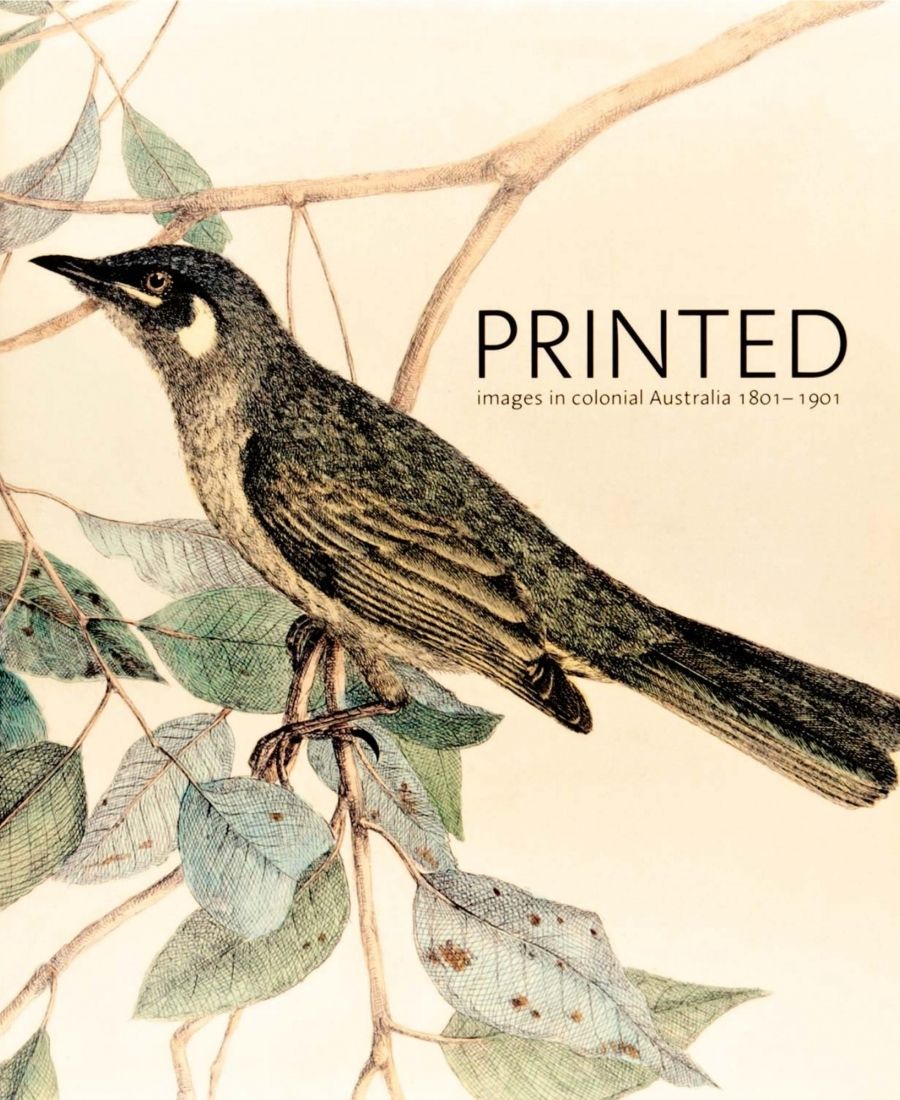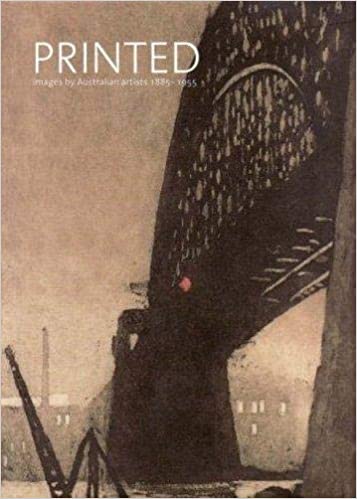
- Free Article: No
- Review Article: Yes
- Article Title: Butler's medium
- Online Only: No
- Custom Highlight Text:
In 1961 the Tasmanian Historical Research Association published Clifford Craig’s Engravers of Van Diemen’s Land, which proved to be the first of several books in which Craig attempted to document every nineteenth-century print with a Tasmanian subject produced in Tasmania, mainland Australia and overseas. Craig, in the next two decades, produced follow-up volumes expanding the area covered and including recently discovered prints. His work remains unique in Australia. Sadly no other collector, scholar, curator or librarian has taken up the challenge and attempted to document the printed images of another state.
- Book 1 Title: Printed Images in Colonial Australia 1801-1901
- Book 1 Biblio: National Gallery of Australia, $89 hb, 328 pp
- Book 2 Title: Printed Images by Australian Artists 1885-1955
- Book 2 Biblio: National Gallery of Australia, $89 hb, 328 pp
- Book 2 Cover Small (400 x 600):

- Book 2 Cover (800 x 1200):

Butler’s monumental 2007 exhibition, Story of Australian Printmaking, presented hundreds of prints, posters and illustrated books, mostly drawn from the NGA’s collection but including a few loans from public and private collections. Printed Images in Colonial Australia 1801–1901, the publication of which coincided with the exhibition, was the first in a proposed three-volume history of Australian printmaking. Printed Images by Australian Artists 1885–1955 has just been published, and early in 2008 we can expect Printed Images by Australian Artists 1955–2005. A fourth volume, to be published in a few years’ time, will be devoted to foreign images of Australia. These four volumes will represent an unparalleled contribution to our knowledge of a specific aspect of Australian art history.
In Printed Images in Colonial Australia 1801–1901, Butler sets the record straight about the production of printed images in the colony. His knowledge of the carefully recorded professions of the first convicts allows him to consider what might have been and to write a brief but fascinating account of what was. With an introductory chapter that includes examples of engraved metal, such as the foundation plate from the first Government House, Sydney, and an Aboriginal ‘king plate’, Butler establishes the tone for the first volume. It is wide-ranging and inclusive. Since it does not espouse a narrow definition of the subject, the reader will frequently be surprised by the contents.
Proposing them to be the first-known prints produced in New South Wales, Butler gives the best published account of John Lewin’s engraved illustrations for his Birds of New South Wales, with their Natural History (1813) and Prodromus Entomology, Natural History of Lepidopterous Insects of New South Wales (1805): the curious story of their publication in both Sydney and London, and of the difficulties experienced by Lewin and his wife in their production.
Similarly, Butler gives a clear account of the earliest views of Sydney produced in the colony. The familiar images of early Sydney published by Absalom West and James Wallis are generously illustrated, and the at times unexpected details of their creation and publication provide entertaining reading. The illustration of frontispieces and even broadsheets advertising the availability of prints indicates the depth of information offered and the scholarship that has gone into the preparation of the text.
It is this inclusiveness that makes Butler’s history so fascinating. Chapters on forgeries and banknotes explain a great deal about the earliest engraving and printmaking in the colony. Similarly, when discussing the profession of artisan and artist printmakers, the inclusion of advertisements, trade cards, letterheads and billheads, as well as a range of book illustrations, with examples of scientific illustration, reveals the extraordinary range of material that makes up the history of colonial printmaking. A whole chapter devoted to the seldom seriously considered chapbook-style woodcuts introduces colonial, political and social comment and satire. Thomas Clayton’s 1847 wood-engravings humorously comment upon the introduction of unsuitable British-style uniforms for the Sydney Police Force, and illustrate aspects of colonial life, including The butcher boy and Illegal tossing, that hint at the visual origin of characteristically Australian humour.
When writing about the first lithographic prints in the colony, Butler begins with Augustus Earle’s soulful image of Bungaree, dressed in cast-off clothes and with a king plate dangling around his neck, welcoming the white man to Sydney, and gives an exceptionally illuminating account of the introduction of this relatively new technique into the colony. Like the account of engraving, the story of lithography includes obscurities, such as a series of buildings in Hobart by an unknown artist printed in 1834, and the masterpieces of John Skinner Prout, Alexander Schramm and Eugene von Guérard from the 1840s, 1850s and 1860s. It also encompasses the more proletarian imagery of S.T. Gill and many less well-known artists. However, once again, it is Butler’s inclusion of the unexpected that greatly adds to our understanding of the medium. Alongside scientific illustration, sporting prints and the pretty gift books produced by women artists such as Louisa Anne Meredith and Fanny Anne Charsley in the 1860s, he includes the chromolithographs after paintings by Nicholas Chevalier, Louis Buvelot and William Ford that have long been reviled by print collectors as unworthy of their attention. In his account of late nineteenth-century wood-engraving, the space devoted to newspaper illustrations and to their coloured supplements and photo-lithography might surprise some. But once again, it is Butler’s broad concept of printmaking that makes this more than a narrow art-history text.
In Printed Images by Australian Artists 1885–1955, Butler sets out to give a history of the development of artist-made prints. Once again, he takes a chronological approach that examines the development of particular artists within an individual medium. Beginning with the earliest artist-etchers, such as Conrad Martens in the mid 1850s, he carefully places the work of E.L. Montefiore, John Mather and Victor Cobb into their social and artistic context. This greatly helps when considering the more familiar work of Norman and Lionel Lindsay and Sydney Long in the first decades of the twentieth century.
The accounts of various media that follow – lithography, monotypes, the revival of etching, woodcuts, wood engraving and linocuts – set the masterpieces of artists against the works of their lesser known contemporaries. Thus the works of artists such as Margaret Preston, Thea Proctor, Ethel Spowers and Napier Waller are seen against the often surprisingly good work of numerous lesser-known artists, including Cristina Asquith Baker, Murray Griffin, Violet Teague, Jessie Traill, and A.B. Webb. These individuals are each deserving of greater attention and solo exhibitions.
Alongside his account of the work of the more traditional artist–printmaker, Butler gives space to the involvement of artists with the development of commercial illustration in books and posters. The sophistication of the designs of Ruby Lind, Blamire Young and the Lindsay brothers shows an acute awareness of international style. While they may have been working at the end of the earth, their graphic design shows the influence of fashionable Scottish art nouveau and even Edwardian Japonism, which surprises the viewer. Violet Teague’s Night Fall in the Ti-Tree (1906), is undoubtedly one of the most beautiful children’s books produced in Australia. Similarly, the travel posters of Gert Sellheim and Percy Trompf are exemplary art deco designs, with a strong sense of the specifically Australian style, full of sunlight and blue skies – blue and gold – that developed between the world wars.
The third section of this volume, devoted to ‘war, depression, anxiety’, offers a selection from the NGA’s collection which indicates the breadth and depth of Butler’s collecting. Until a few years ago, apart from a few posters, both anti-war and recruitment, and Ludwig Hirschfeld Mack’s often reproduced woodcut Desolation, Internment camp, Orange, N.S.W. (1941), most would not have thought it possible to assemble so many prints made in Australia concerned with the devastation of war. However, Butler’s 1997 exhibition, The Europeans: Émigré Artists in Australia 1930–1960, obviously introduced him to many artists whose careers were forgotten or subsumed by making a new life in Australia. The prints produced, often in remote refugee camps in Australia, by artists such as Erwin Fabian and Bruno Simon are among the most powerful images in the book. Later work by artists recording the effects of the Depression and World War II, and making political statements, frequently deliver a potent message. These rare prints have seldom been collected as art; their survival is remarkable.
Throughout both books, Butler’s knowledge of the various techniques of printing and the problems involved in producing prints serves him well and allows him to explain specialist terms and procedures to the non-specialist reader. Both books are thoughtfully designed, generously illustrated and beautifully produced. I was delighted to find that illustrations consistently include the margins and inscriptions, and occasionally the image shows an open book, giving the reader a greater than usual sense of the way in which these prints were originally seen. In taking this kind of care, these books set a new standard for specialist publications.
Butler’s work at the NGA has been encouraged by the generosity and foresight of Gordon Darling. In establishing and continuing to support the Gordon Darling Print Fund, he has enabled the development of this unique collection documenting the history of prints and printmaking in Australia. These books are a remarkable achievement not only because of their standing as a major scholarly contribution to art history but also because they are a significant contribution to a general reader’s understanding of the history of Australia. Two further volumes will make it an extraordinary feat.


Comments powered by CComment